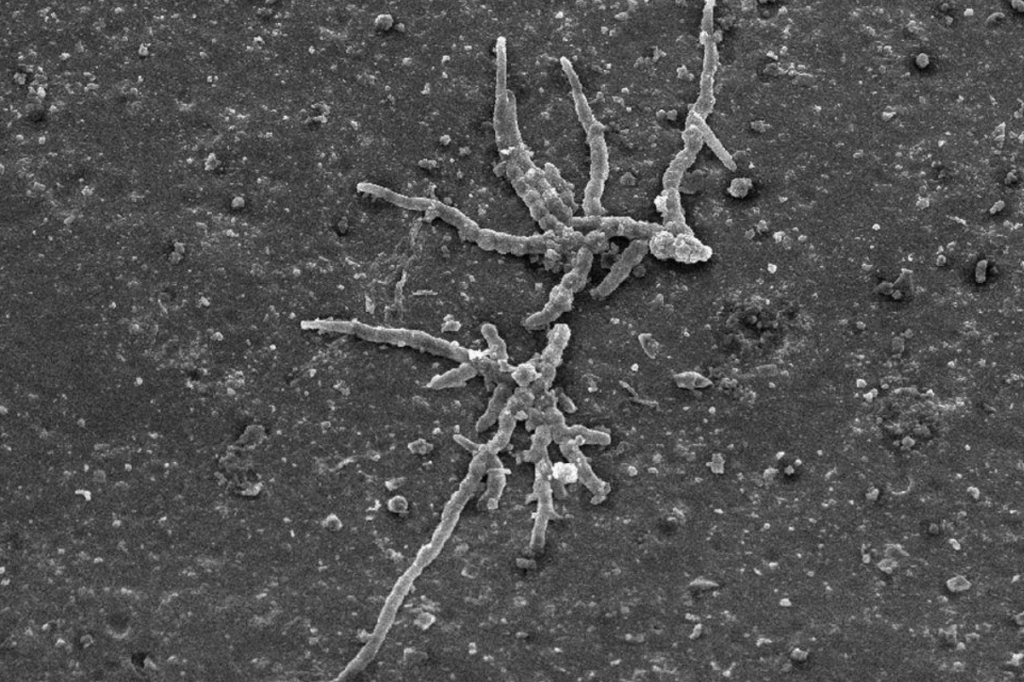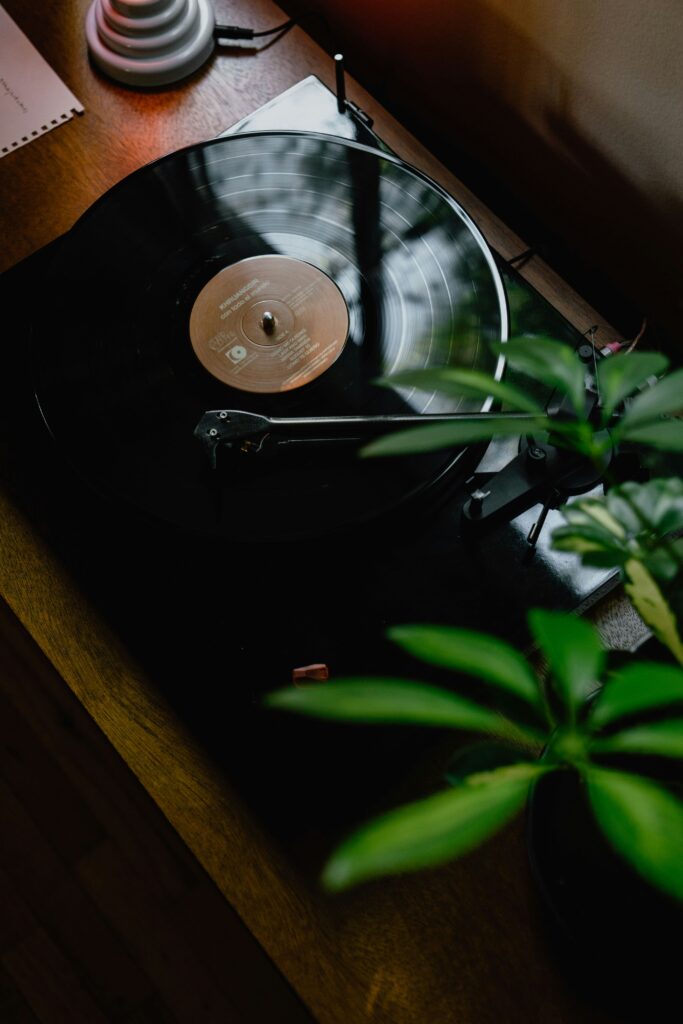Vinyl contaminants
The most common cause of unwelcome fuzz and crackles.
We come across all sorts of nasties on vinyl records, some more sinister than others. A bit of embedded dust here, or minerals left behind by some evaporated water there are nothing to worry about in the long term. Unfortunately however, there are some organisms that love vinyl even more than we do – they actually feed on it!
Particulates
Particulate deposits on records take two main forms: soluble and insoluble. Both can cause unnecessary wear and playback issues, both can be removed relatively easily.
Dust – mainly consists of tiny stray fibres from fabrics, dead skin cells, pollen and anything else that might be floating around your house. These are insoluble but are light weight and can generally be removed with regular dusting. Doubtless some of the smaller pieces can fall into and stay in your grooves but these can be easily agitated and suctioned out with specialist equipment.
Minerals – Most mineral deposits that are left on records occur when records have been cleaned with tap water and/or without a suction system to remove liquid that will leave residue as it evaporates. These are easily removed by dissolving in a solvent and extracting via suction.
Biological
Probably the worst contaminant to have present on your collection as it can cause active degradation over time. Be wary of used vinyl purchases that may have been stored in some less than stellar conditions. Unfortunately, this is a greater risk in the high-moisture UK.
Read this interesting article that was published in the Applied and Environmental Microbiology Journal back in the early 2000s – it describes how some species of fungus break down PVC as a food source. One species, Emericella nidulans, even managed to consume nearly 7% of the PVC test substrate over the 95-week test period! That was just on a flat rectangular piece of PVC – imagine the havoc it could cause on a vinyl record with all of the surface area presented by the microscopic grooves.

Fortunately, fungicidal cleaning chemicals exist that are safe to use on vinyl.
Oils & production residues
These are some of the most common contaminants we have seen on records.
Production residues are present to some degree on almost all vinyl records as they are a byproduct from a necessary stage of the manufacturing process. Luckily, they are generally not an issue for most of us, with very little or no audible impact. It has been reported by some aficionados however, that the fidelity of brand new vinyl has been improved following a professional clean that removes silicone-based release agents.
Oil based contaminants are second only to dust when it comes to their prevalence on our vinyl collections. This is thanks to the fact that our hands pick up all sorts of hard-to-shift oils throughout the day. By the time we are ready to pull out some vinyl, relax, and sit back to listen there is a good chance any wayward fingers will leave a pesky print. Over time, the deposits left in fingerprints tend to become more gummy and stubborn so the more quickly they are removed the better.
Cleaning vinyl records
There are a number of DIY methods available for cleaning vinyl and these are well documented online. Some involve washing under the tap or even applying wood glue and peeling it off!
Alternatively, you might wish to let the experts handle things, which is why we offer a professional vinyl cleaning service.
We have the equipment, know-how and chemicals licenses needed to ensure that every type of contaminant is removed without damage.

Damage: Nicks, scratches and scuffs
Damage to vinyl records can take a few different forms, from inaudible light scuffing to permanent damage caused by accident or a faulty stylus.
If you tilt your vinyl towards the light and inspect it, there is a good chance you will see some light scuffs across the surface. If you can’t hear any pops or ticks during playback there is nothing to worry about.
On the other hand, deeper scratches and imperfections may well cause noise. A good test to help determine whether the noises you are hearing are caused by damage or contaminants is to listen out for a recurrent noise with every rotation. If you experience this, it is most likely caused by some form of damage although not always. Biological growths and fingerprints also tend to occur in one spot and cause more of a crackle than a pop.
Roadblocks
Damage to vinyl that ruins playback entirely. Some deep imperfections can cause the stylus to keep playing the same passage of music over and over again or even jump out of the groove entirely.
If you experience this, sadly there is a good chance your record is ruined, but you could still try the matchstick method:
- Play your record, make note of where the stylus is hitting the ‘roadblock’.
- Grab your record and a matchstick (or any small piece of softwood will do).
- Using the ‘butt’ end of the matchstick, rub the problem area of the record in the same direction as the grooves.
- Test playback of the record to see if the stylus now tracks as it should.
- Repeat the above steps if necessary.
If successful, you should find that your record is now able to play from start to finish by itself. You will still have some noise where you carried out the repair but at least you won’t need to get up to advance the stylus.
